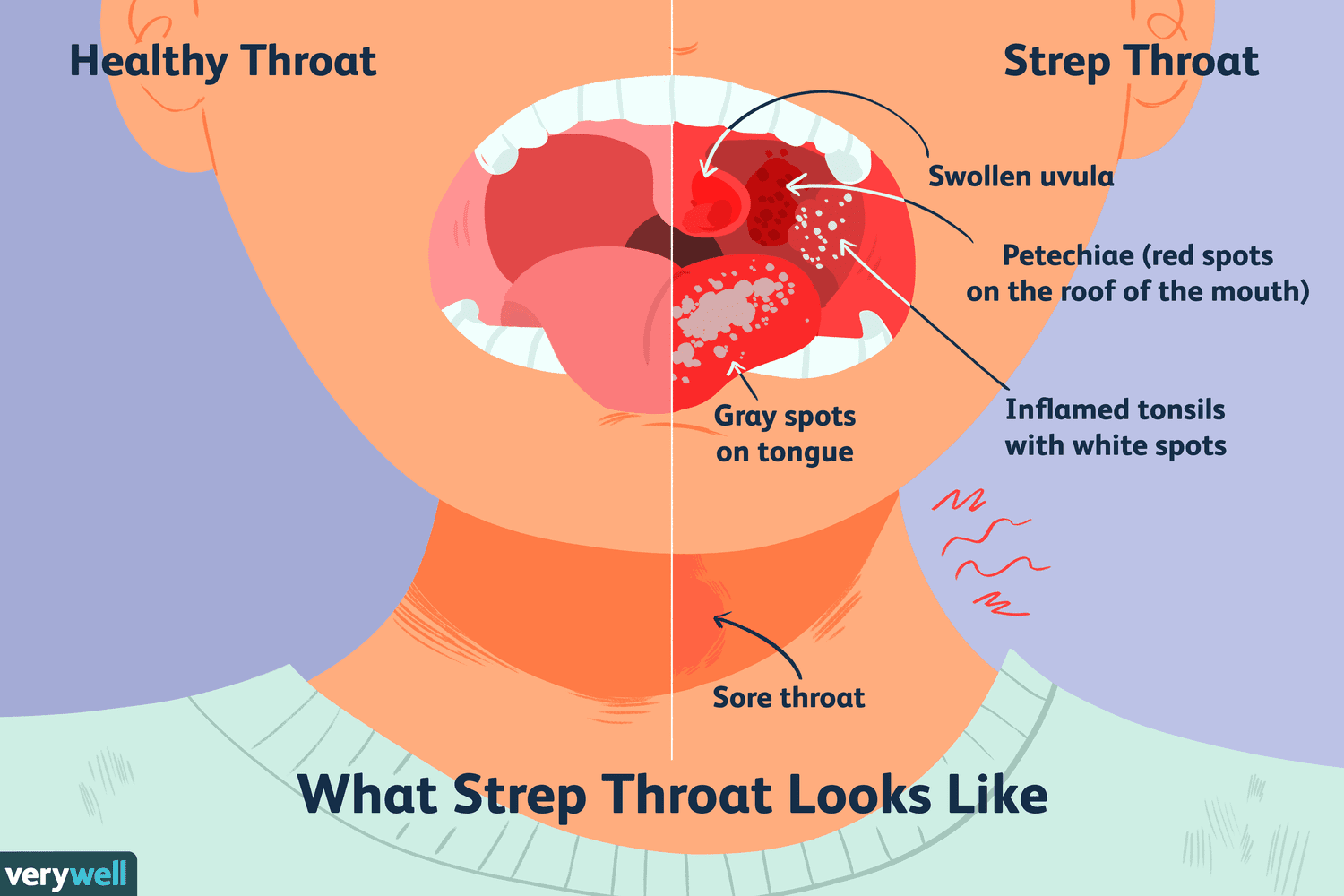Watch Your Strep!
A sore throat can be either an annoying ailment from allergies or a virus, or the symptom of another illness. Strep throat is a contagious disease caused by an infection with Group A Streptococcus (pronounced: strep-toe-kock-cus) bacteria. While anyone can get strep throat, it is most commonly seen in children between the ages of 5 and 16. It is important that you go to a health care provider if you suspect strep, because if left untreated streptococcal throat infections can lead to rheumatic fever and kidney disease. It’s also important for teenagers to find out if a bad sore throat is a symptom of mononucleosis.
 The symptoms of strep throat vary from person to person. The most common findings include a swollen bright red throat, with dark red spots on the back of the throat, a very sore throat, fever [101° F (38.3° C) to 104° – 105° F (40° C)], and tender swollen lymph nodes under the jaw. Usually the tonsils are red and enlarged. You may also have white pus on your tonsils or your tonsils may be covered with a gray or white coating. It is not uncommon to have a headache, generalized aches and pains, and nausea. The nasal congestion and runny nose associated with the common cold do not usually occur with a strep throat.
The symptoms of strep throat vary from person to person. The most common findings include a swollen bright red throat, with dark red spots on the back of the throat, a very sore throat, fever [101° F (38.3° C) to 104° – 105° F (40° C)], and tender swollen lymph nodes under the jaw. Usually the tonsils are red and enlarged. You may also have white pus on your tonsils or your tonsils may be covered with a gray or white coating. It is not uncommon to have a headache, generalized aches and pains, and nausea. The nasal congestion and runny nose associated with the common cold do not usually occur with a strep throat.
Strep is extremely contagious. The strep bacterium is found in the nose and/or throat of infected persons and is spread to the next person through the air with sneezing or coughing. Rarely, people catch strep throat by eating contaminated food. People with strep throat can spread the disease to others until 24 hours after treatment or for 10 to 21 days if untreated.
Prevention
 |
In normal everyday life, there is no perfect way to avoid strep throat infections. At home, when someone is sick with strep throat, it’s always safest to wash drinking glasses and eating utensils with hot soapy water, or in the dishwasher, and to wash your hands often as you care for the affected person. If you know someone with strep throat, be sure to wash your hands often until they are treated.
If you want to be able to tell the difference between a cold or the flu, check out those articles. |
Incubation Period
Symptoms usually begin two to five days after exposure to the bacteria and siblings have a fifty-fifty chance of getting strep from an infected brother or sister.
Since the same symptoms of a strep throat can occur with common viral infections, a throat culture is frequently used to identify the strep bacteria. Since this test takes one to three days to get results, newer methods have been developed to detect the strep’s presence in a matter of minutes (“rapid strep test”).
Once confirmed, strep responds well to a ten-day course of antibiotics. Once antibiotics are started, teens with strep throat can return to school when they feel better – about two days later, unless your health care provider tells you otherwise. It is important that the infected person take the antibiotic for the full course of treatment to avoid complications.
What You Can Do To Feel Better
 |
To prevent dehydration, drink plenty of cool liquids, such as water or ginger ale, especially if you have a fever. Don’t drink orange juice, grapefruit juice, lemonade, or other acidic beverages. These will irritate your throat. Warm liquids like soups or hot chocolate can be soothing. Gargling with warm, salty water several times a day can help relieve the soreness in your throat. Stir 1 to 2 teaspoons of salt in 8 ounces of warm water. Just gargle – don’t swallow. Rest will help you feel better too. |
 Scarlet fever, a rare form of strep infection, is characterized by a sore throat, more general symptoms, such as fatigue, and a red rash on the body that feels like sandpaper. The rash usually first appears on the neck and upper chest, and then quickly spreads over the rest of the body. There is increased redness in the skin folds of the groin, armpits, and elbow. Scarlet fever is nothing more than a strep throat with a rash (a toxin generated by the strep bacterium causes the rash) and the complication rate is no different from the complication rate from a strep throat alone. It is treated the same way as a strep throat.
Scarlet fever, a rare form of strep infection, is characterized by a sore throat, more general symptoms, such as fatigue, and a red rash on the body that feels like sandpaper. The rash usually first appears on the neck and upper chest, and then quickly spreads over the rest of the body. There is increased redness in the skin folds of the groin, armpits, and elbow. Scarlet fever is nothing more than a strep throat with a rash (a toxin generated by the strep bacterium causes the rash) and the complication rate is no different from the complication rate from a strep throat alone. It is treated the same way as a strep throat.
Complications, such as rheumatic fever, and acute glomerulonephritis, can be prevented if Strep throat is treated completely with antibiotics. The proper treatment of Strep throat will prevent these two serious complications — rheumatic fever and glomerulonephritis (kidney disease). So, see your health care provider!
To Teen Health Secrets Home Page
